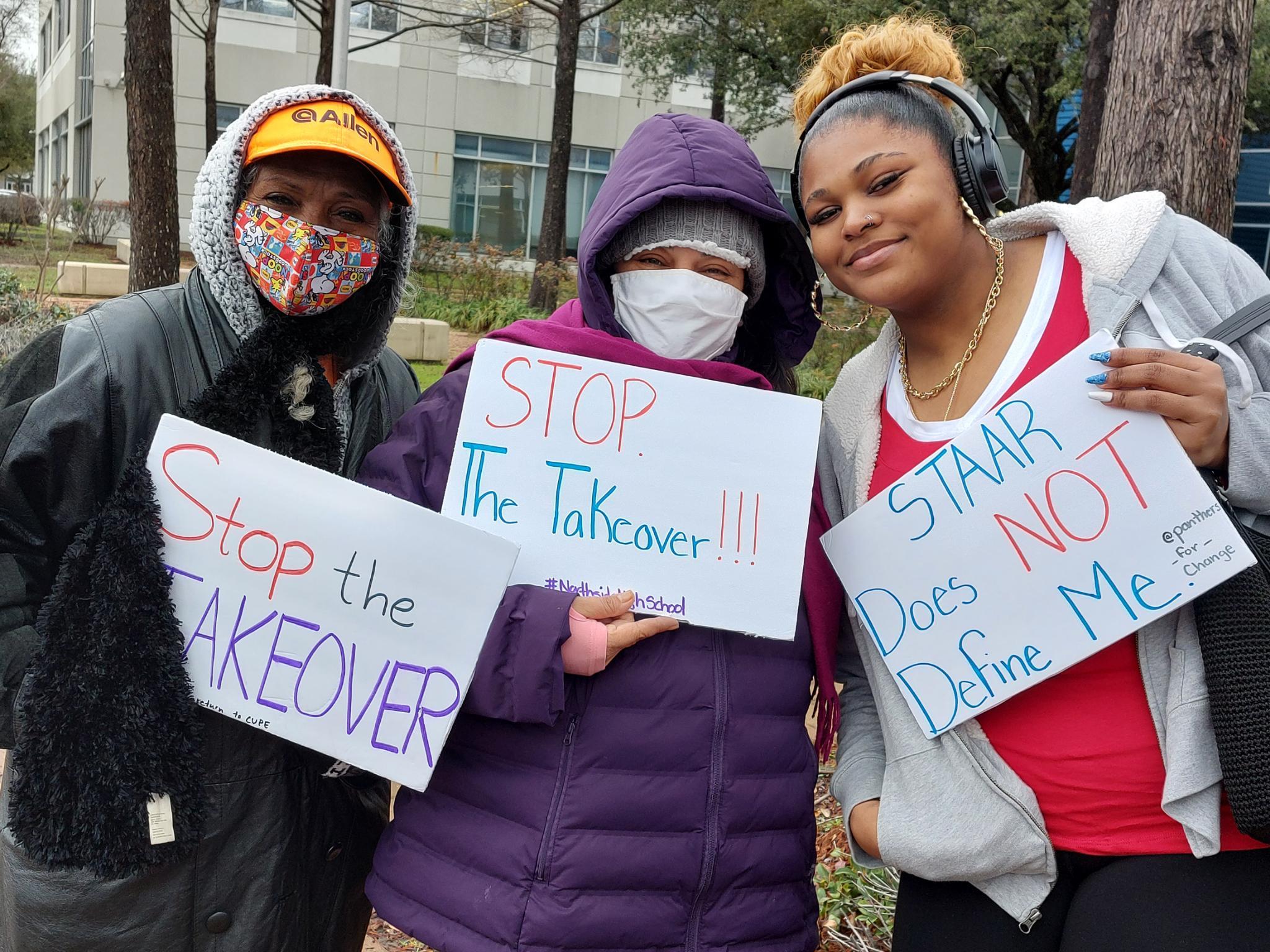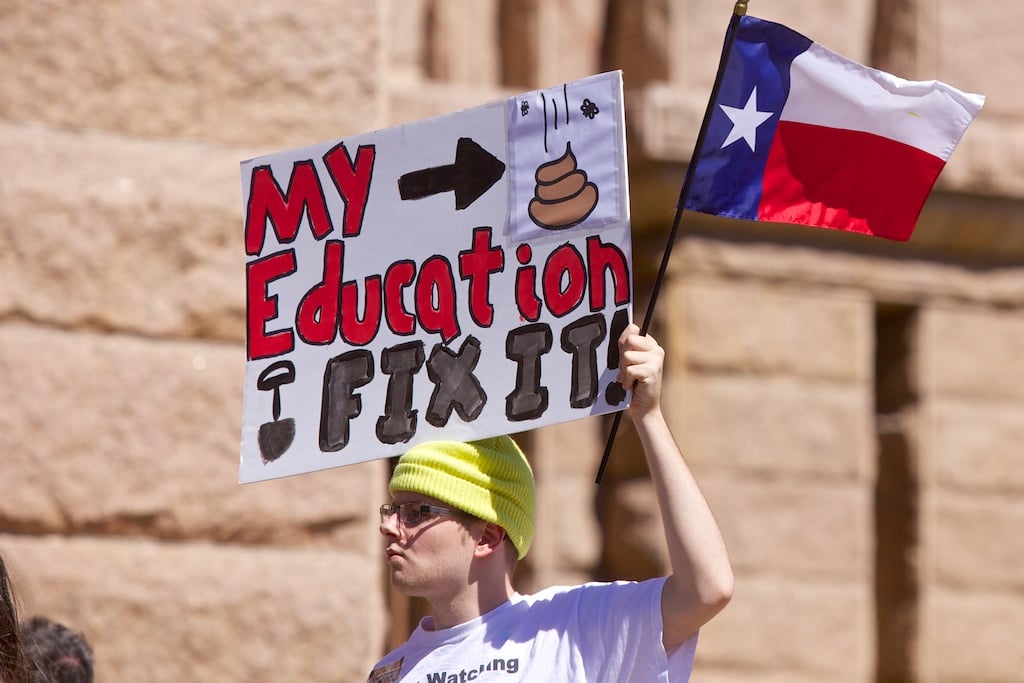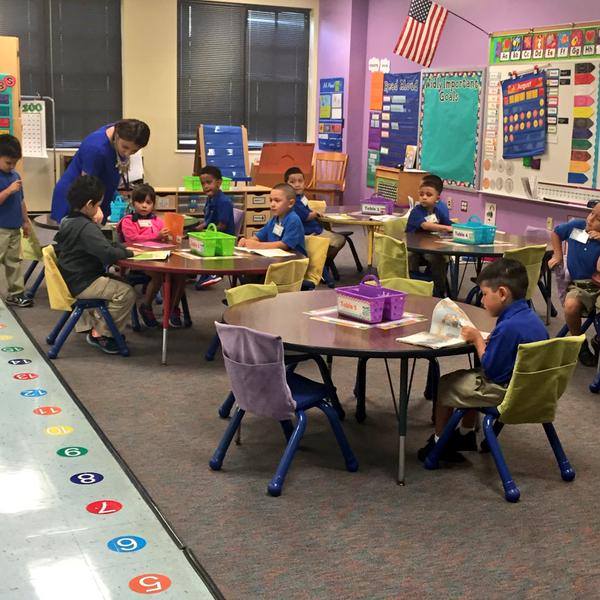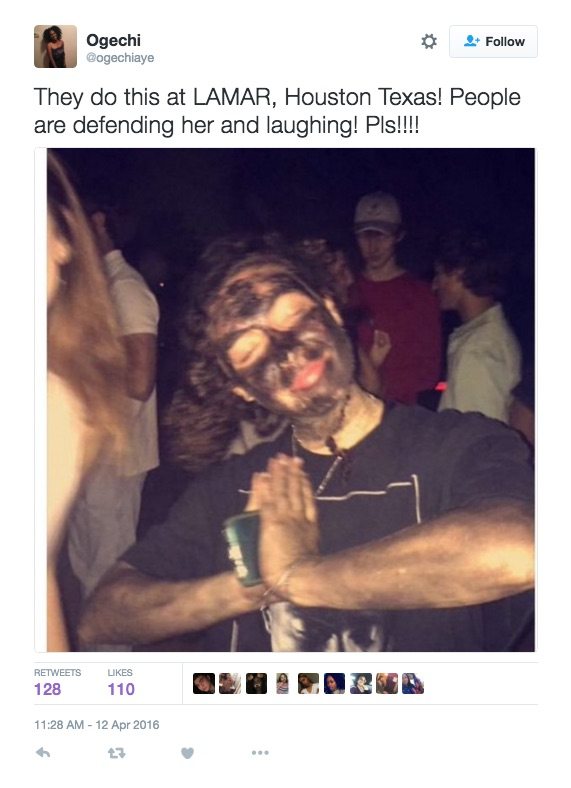
Blackface Photos Spark Controversy Over Racism at Houston High School

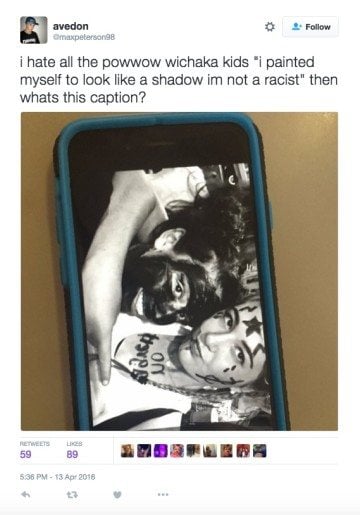
First, it was a photo of a Houston high school student wearing black face paint and a Tupac shirt. Then, another photo circulated on Twitter: In it, two white high-school girls, faces covered in black face paint, smiling above the caption “Black niggas.”
Now, a group of black students at Lamar High School say they want administrators to address their white peers’ off-campus racist behavior with parents.
Students fired off tweets about the racist connotations of the screenshots, taken from Snapchat, a social media app that deletes messages after they have been viewed. Taken at a party for one of Lamar’s unofficial “sororities,” the two photos have been tweeted and retweeted hundreds of times.
Black students make up about a third of the student body at Mirabeau B. Lamar High School, one of Houston’s oldest. The school is about one-quarter white. In 2014, the school changed its mascot from the Redskins to the Texans in an effort to be more racially sensitive.
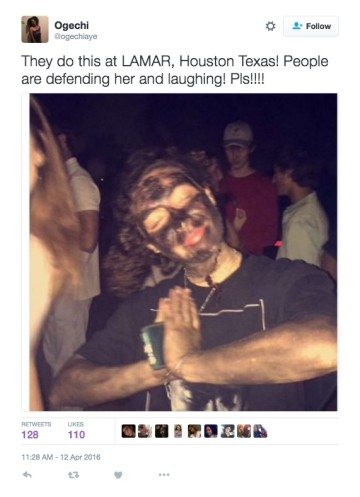
Blackface, historically a form of makeup used in the 1800s by white actors to portray black characters, continues to surface periodically as a kind of party attire for white students, who’ve been criticized for the racist costuming at schools ranging from Southern Methodist University to the University of Florida. In October 2015, organizers of a rap-themed frat party asked partygoers at a white fraternity to “bring their inner thug,” sparking a campus-wide movement called Black at SMU. Two partiers at the University of Florida in 2012 painted themselves black for a “Rock-stars and Rappers” party (sic). In 2001, Auburn University suspended two fraternities after photos showed a student in blackface with a noose around his neck.
Lamar students say this incident is only the latest in a legacy of cliquish racial exclusion that makes students of color feel unwelcome on their own campus.
Lamar senior Ogechi Anene, 17, said off-campus clubs, which have been around since at least the 1970s, work like college-level fraternities and sororities, with initiation rituals and wild parties.
“They drink and they haze,” she said. “The thing about Lamar is, it’s a very old school. They have these deep-rooted ideals in it. The kids who have a lot of money and time, they do whatever they want.”
Students say the April 9 image of the white student in face paint and a Tupac shirt was from a party thrown by Wichaka, a sorority that gained notoriety in 2008 after photos surfaced of what appeared to be hazing rituals involving girls covering themselves in mustard.
Students told the Observer that these groups only recruit white students.
“As a black person, you wouldn’t want to be a part of it,” Anene said. “That’s really rare that they would be invited or celebrated there.”
White students defended the costumes. Lamar senior Reagan Shadwick told Channel 2 News in Houston that the girl in the Tupac shirt was wearing “shadow,” part of the required costume for younger students. Students said these younger students are called “wimps,” and follow the orders of older students, usually seniors, called “masters.”
“It was supposed to be a shadow,” Shadwick said. “They asked her to bring a black shirt and that happened to be the shirt she was wearing.”
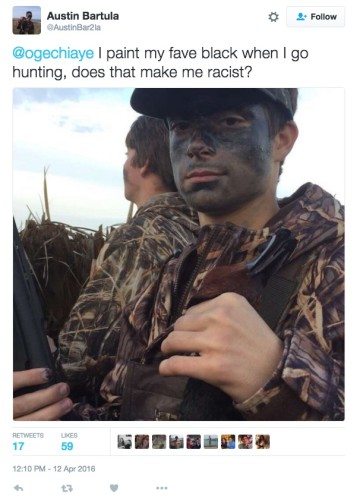
Some white students also said the “Black niggas” photo was not an example of blackface.
A spokesperson for Houston ISD said in an email to the Observer that principal James McSwain addressed the Lamar High School student body Wednesday “to reaffirm the school’s commitment to maintaining an educational environment that is inclusive and free of racial harassment.”
Anene was skeptical of the principal’s remarks. “We all know that that means: ‘We don’t like the bad publicity that’s been given and know that it’s not Lamar’s fault and we can’t do anything about it,’” she said.
Anene said she wants administrators to act on their commitment to an inclusive educational environment by starting at home.
“First I want them to contact the parents … and make it known that the school is dissatisfied with them,” she said. “Technically, we all have to treat each other equally, but that’s not how it happens.”
Marsae Johnson, who has since transferred away from Lamar, says she tried to start an official extracurricular club for black students at Lamar, but her idea was rejected by administrators. She said she was told that such an organization would cause “racial divisions.”
When asked for comment about the black student club’s rejection, the Houston ISD spokesperson told the Observer that “all campus clubs are expected to admit students from all backgrounds.” The representative said that “an application to create a black student union would receive consideration if it were to meet these standards and other requirements, such as having a faculty sponsor.”
Houston ISD also said that school administrators are “currently investigating to identify any non-sanctioned student organizations that may be operating on campus, and will take appropriate disciplinary action if necessary.”
Johnson said she doesn’t believe students who claim ignorance about blackface. “They know what it is,” Johnson said. “They’re not stupid or oblivious.”
For Johnson, the white students’ defenses of the face paint brought to mind conversations she had had with some of those same students in class discussions about Black Lives Matter protests.
“It’s not surprising because if you know these people and you know who they are, you know that’s how they are,” Johnson said. “You can’t really blame them. It’s kind of just the way they were raised. But that’s just how they are. They just don’t care.”
